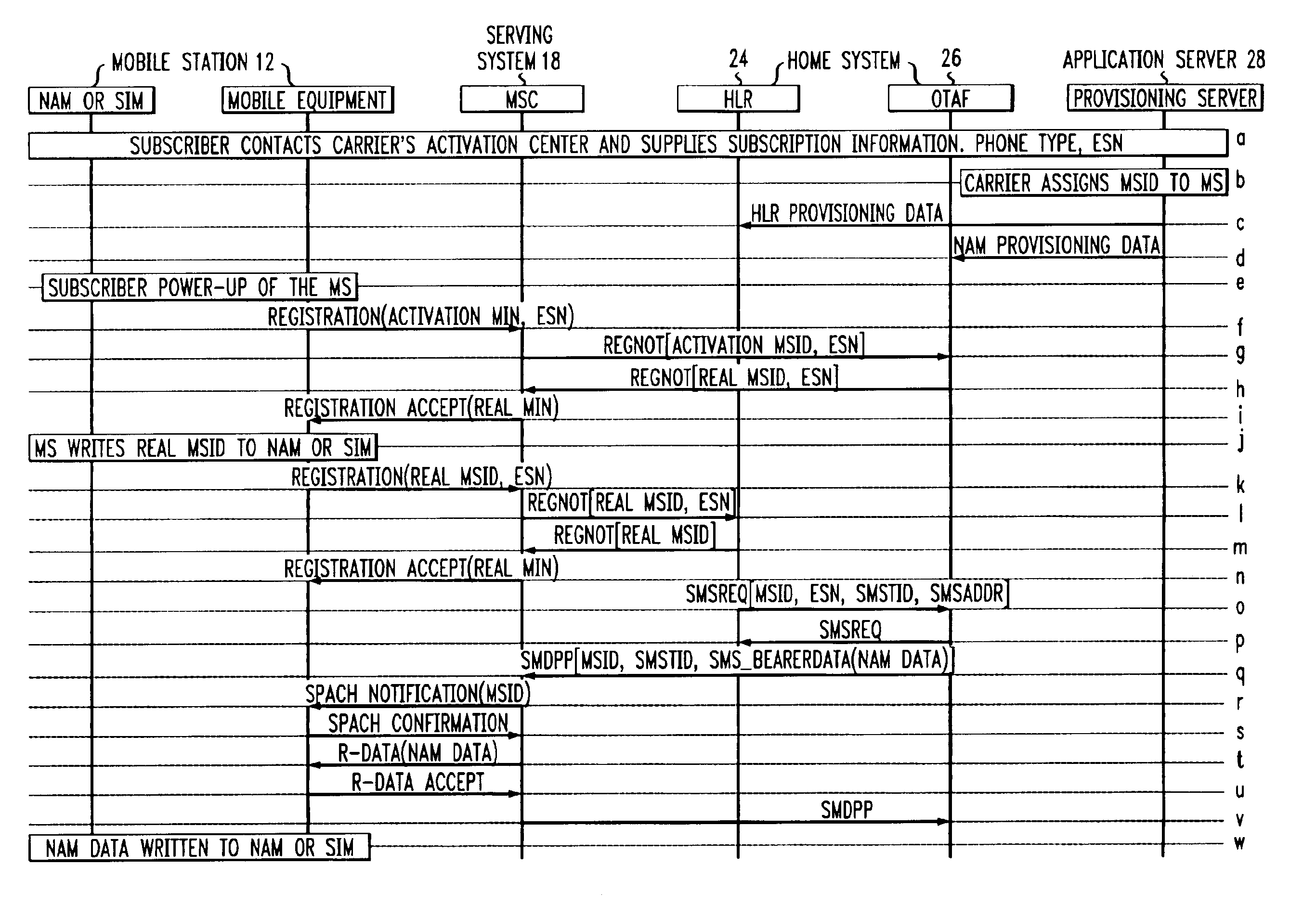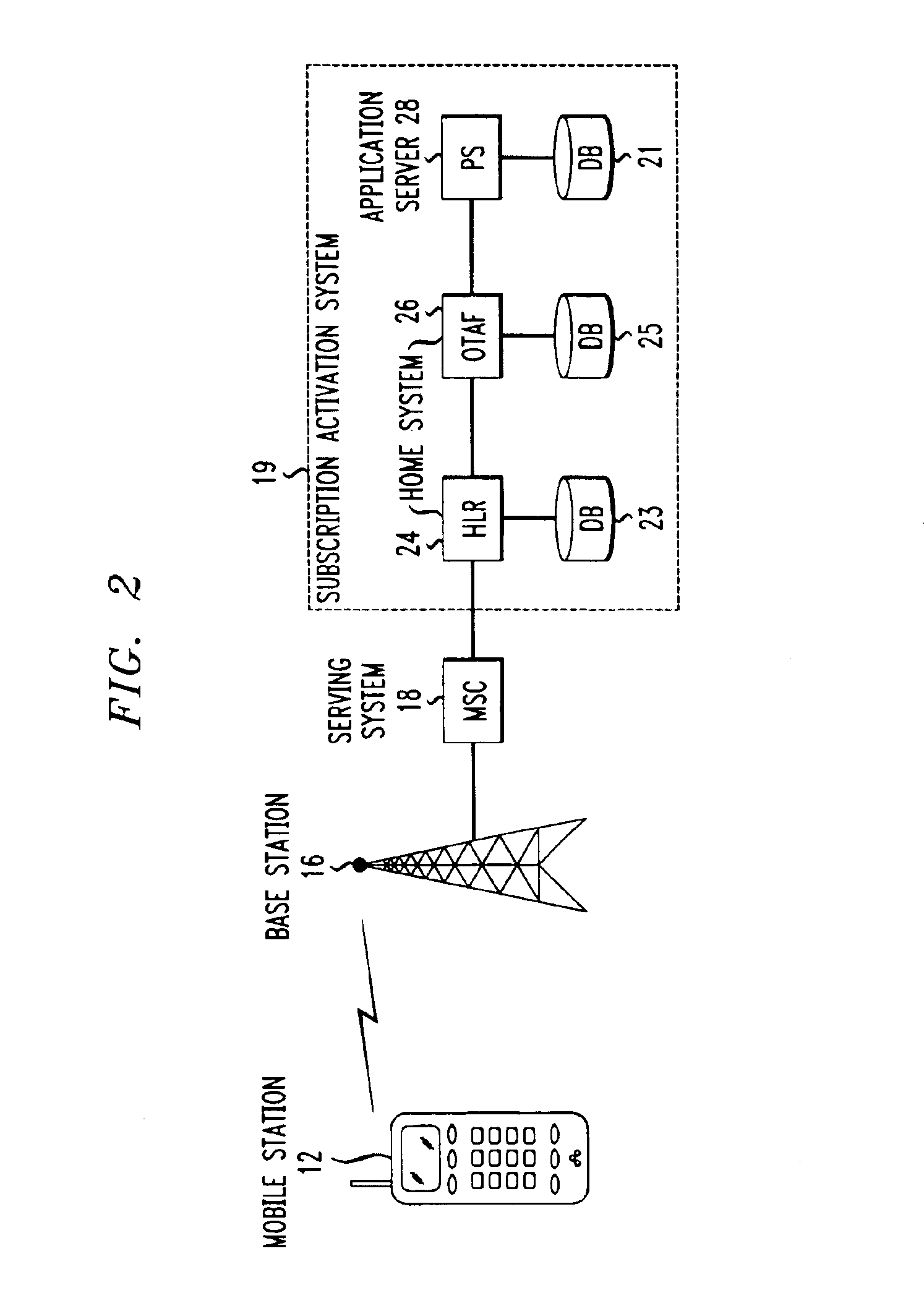Method for programming a mobile station using a permanent mobile station identifier
a mobile station and identifier technology, applied in the field of wireless communication, can solve the problems of incorrect activation or non-activation of both mobile stations, and achieve the effect of reducing the likelihood of confli
- Summary
- Abstract
- Description
- Claims
- Application Information
AI Technical Summary
Benefits of technology
Problems solved by technology
Method used
Image
Examples
Embodiment Construction
With reference now to the drawings, FIG. 1 depicts a representative wireless communications system (“WCS”) 10. The WCS 10 serves a number of wireless mobile stations (“MS”) 12A-F and wireline terminals (not shown) within a geographic area partitioned into a plurality of spatially distinct regions called “cells”14A-C. Each cell 14 includes a respective base station (“BS”) 16A-C, and a boundary represented by an irregular shape that depends on terrain, electromagnetic sources and many other variables. The mobile stations communicate via one or more wireless access technologies (e.g., TDMA, CDMA, FDMA, etc.), providing one or more services (e.g., cordless, cellular, PCS, wireless local loop, SMR / ESMR, two-way paging, etc.) with signals representing audio, video, data, multimedia, etc. Each BS 16 preferably conforms to the IS-56B standard, and communicates with a Mobile Switching Center (MSC) 18, also known as a mobile telephone switching office, in accordance with well-known standards....
PUM
 Login to View More
Login to View More Abstract
Description
Claims
Application Information
 Login to View More
Login to View More - R&D
- Intellectual Property
- Life Sciences
- Materials
- Tech Scout
- Unparalleled Data Quality
- Higher Quality Content
- 60% Fewer Hallucinations
Browse by: Latest US Patents, China's latest patents, Technical Efficacy Thesaurus, Application Domain, Technology Topic, Popular Technical Reports.
© 2025 PatSnap. All rights reserved.Legal|Privacy policy|Modern Slavery Act Transparency Statement|Sitemap|About US| Contact US: help@patsnap.com



